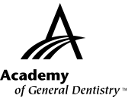|
Exercise No. 365
Subject Code: 185
Appliance Therapy
The 15 questions for this exercise are based on the article, The effect of specially designed and managed occlusal devices on patient symptoms and pain: a cohort study, on pages 46-52. This exercise was developed by Kim Capehart, DDS, DDOC, MBA, PhD(c) in association with the General Dentistry Self-Instruction committee.
|
Reading the article and successfully completing this exercise will enable the participant to:
- identify the ideal characteristics of splints in the dental system (DS) utilized on symptomatic head and neck patients;
- describe the protocol for a new approach to treating symptomatic head and neck patients with a special splint; and
- recognize the benefits of splint therapy in alleviating symptoms of head and neck pain.
|

